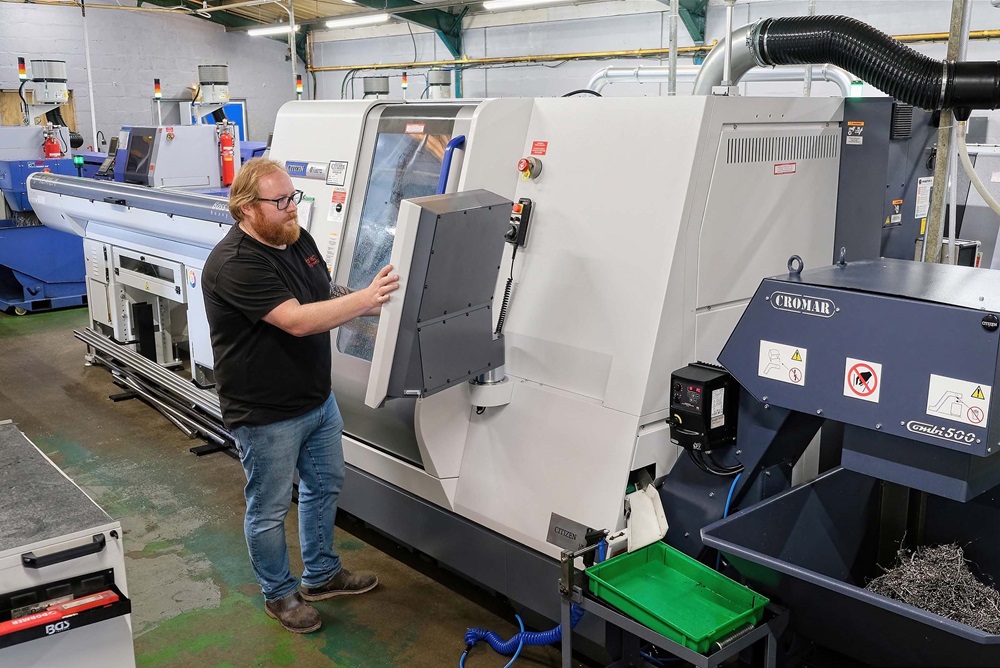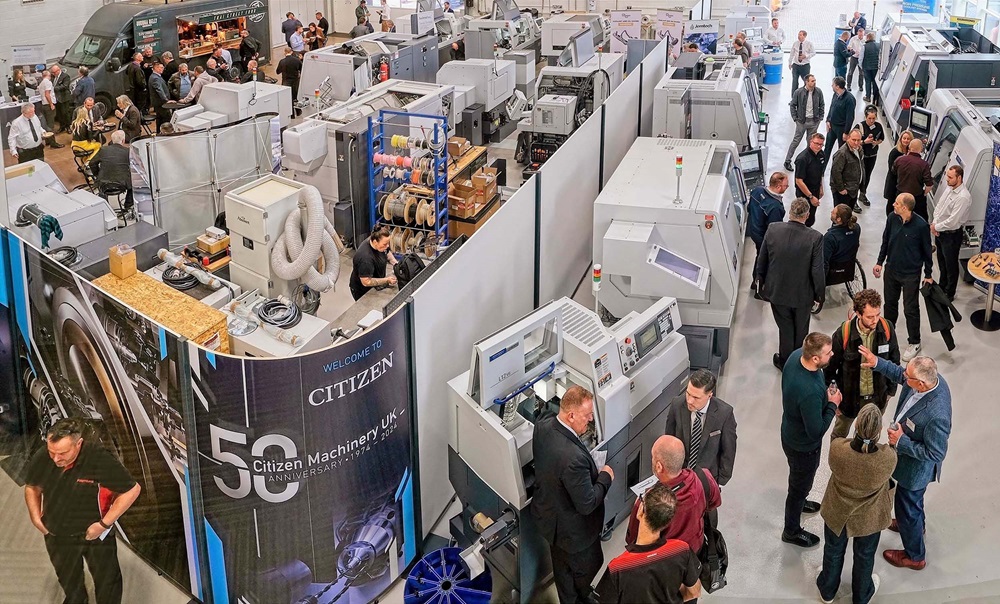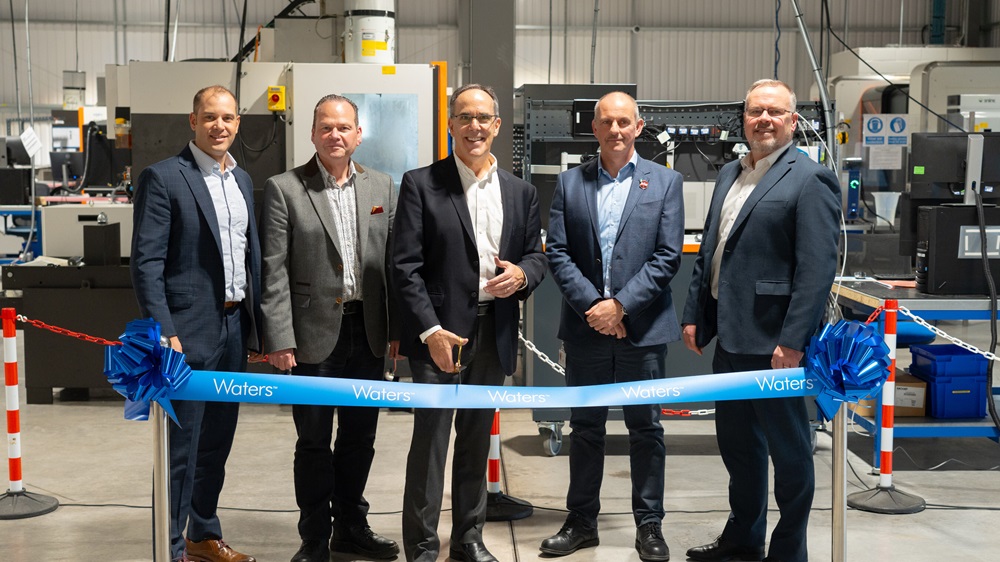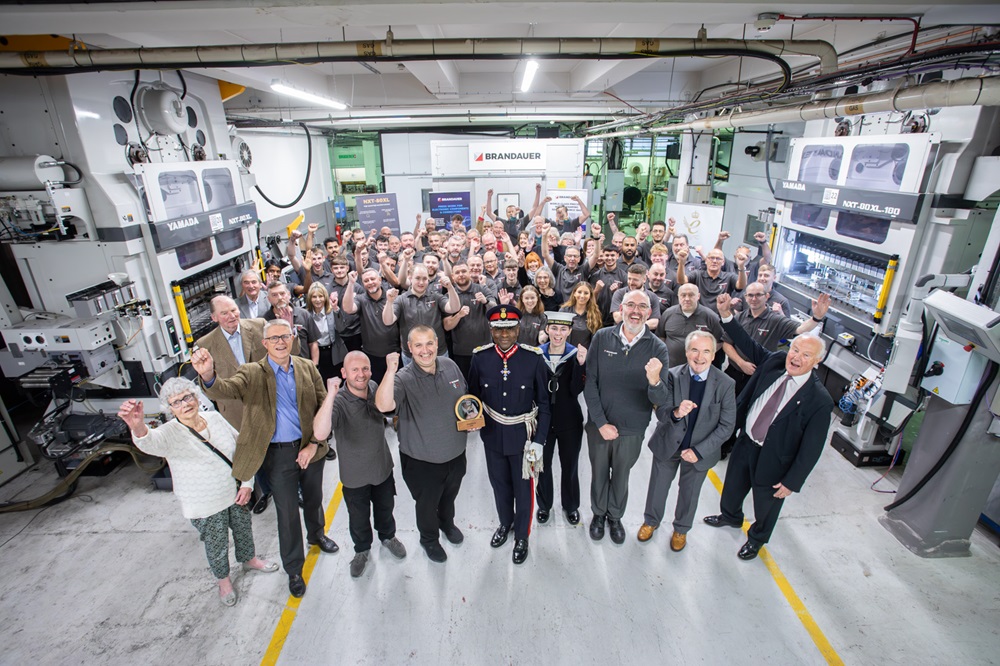As a mechanical engineer who grew up around his father’s historical motorcycles, the stars
were always aligned for Duncan Dunbar to follow his passion and start his own race
engineering business. So, when Dunbar returned to Scotland from studying and working in
high-end motorsport, he got a unit, purchased a machining centre and invested in a
HyperMill CAM system from Open Mind Technologies to help drive his business forward.
As the director and owner of Dunbar Race Engineering, which was founded in 2018 to
deliver design and reverse engineering services, Dunbar rapidly realised that the company
needed to make the next step into manufacturing. This led to the acquisition of a Hurco
VM10i three-axis VMC with a 4 th -axis rotary table, a Mitutoyo CMM and a seat of HyperMill
CAM software.
Specialising in the manufacture and design of components for racing motorcycles and high-
efficiency internal combustion engines, Dunbar’s expertise was initially carved from stints in
British Superbikes and MotoGP before moving into Formula 1. As an engineering team
leader responsible for eight design engineers at Mercedes AMG High-Performance
Powertrains, Dunbar contributed to the Lewis Hamilton and Jenson Button World
Championships from 2008 to 2014. However, the draw of Scotland and his motorcycle
passion was too much of a pull.
“Riding from the age of five, I’ve ridden in offroad and road race motorcycle competitions
and worked in motorsport since I left university,” he says. “I worked in the motorsport
industry for the first 15 years of my career, initially in superbikes, MotoGP and then for a
leading Formula 1 team in the engine design and development department. After that, I
took some time out in Scotland, which is when I started designing parts to help friends with
their racing projects. From there it grew into a commercial operation. Initially, I was
designing and then outsourcing production before realising we needed to do it all
ourselves.”
To bring manufacturing in-house, Dunbar Race Engineering invested in a machining centre
and a reputable CADCAM system, namely HyperMill. A CMM and a part marker also arrived.
“My manufacturing experience in this context was ‘zero’. I grew up making parts for bikes
on a small Boxford lathe with my dad. I never intended to go down the manufacturing route,
but when the realisation came about and we needed to make the next step, I wanted to
have an approach where we’d have no excuses.”
Continues Dunbar: “HyperMill gave us every opportunity to do the best we possibly could.
We weren’t looking at parts thinking ‘we can’t make it’. Our mindset was all about thinking
‘How do we make it?’ With the support of Open Mind and HyperMill, we’ve been able to
make some fantastic parts, especially given our level of experience.”
Dunbar Race Engineering is producing a variety of chassis parts for racing motorcycles and
chassis kits. The company also manufactures suspension parts with scanned surfaces or
difficult pockets to machine.
Fabricator Kevin McNulty from Dunbar Race Engineering adds: “I’ve been a fabricator for
over 15 years, and I started working here two years ago – learning how to become a
machinist. It’s been a steep learning curve, finding out how to operate a CNC machining
centre and program our CNC machine. HyperMill has made the journey a lot easier,
particularly with set-ups. Getting all of that into my head as a non-machinist would typically
be a challenge but seeing it all on a screen with HyperMill makes it so much easier to figure
out and interpret what set-up is necessary for each part. The simulation capability is perfect.
It provides you with trust in what you are programming, and you can see that it’s safe to run
the program.”
Reflecting upon the journey of Dunbar Race Engineering, Open Mind UK’s sales manager
Simon Docker says: “It’s inspiring to see small British companies grow with the help of
HyperMill. The majority of components on the racing bikes at Dunbar are manufactured
here.
He adds: “Open Mind can help businesses small and large. As a company, we pride ourselves
on our level of support and here we have an example of a team that hasn’t even come from
a machining background. They had no machining knowledge, no knowledge of G-Codes – but
they used our support desk to reach this stage. Dunbar has come from nothing to a business
making fantastic components in a short time.”
Adding to this sentiment, Dunbar concludes: “It’s surprised us how quickly we’ve been able
to develop our experience and the type of parts we’re making. There are some components
that we initially considered and were worried that we’d never be able to make them. When
you break jobs down to one face at a time and one machining cycle at a time, and then build
that back into a job list with support from HyperMill – we can see how quickly we’ve
progressed. We can now make components that are pleasing to both us and our customers,
and we’re looking forward to taking on more machining challenges. HyperMill is an enabler.
It allows us to look at components and design things with the knowledge that we can make
them. We know we have the back-up from the applications engineers and the support
centre at Open Mind. That knowledge allows us to take on these projects without any fear
of not being able to deliver.”
More information www.openmind-tech.com



















